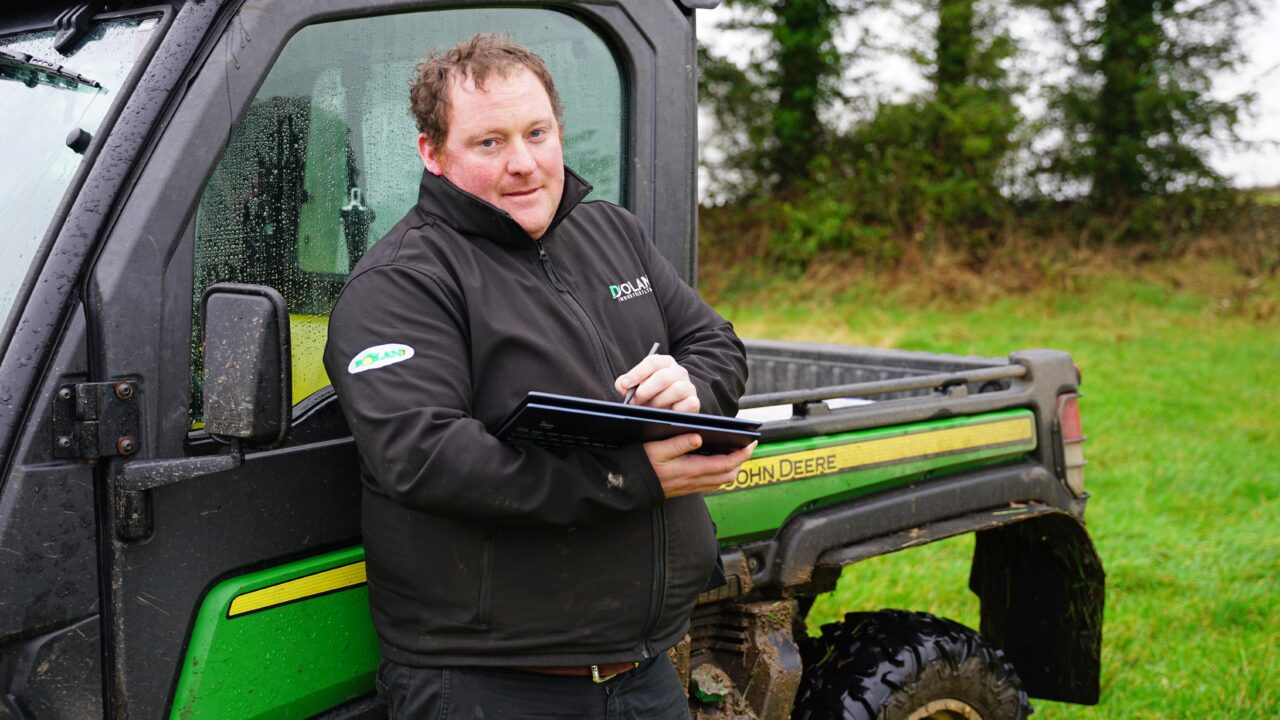The latest round of nitrates legislation, combined with the the increased cost of fertiliser, has focused attention on its correct application as never before.
As in all schemes implemented by government departments, there is an extra burden placed on the farmer in the form of tighter management of inputs and the need to record applications.
Is I.T the answer?
There is also a general expectancy that digital technology is the answer to handling the extra data and information that needs to be generated and preserved to fulfill the farmer’s obligations.
This is an easy assumption to make, but actually locating and applying the correct system to enable a satisfactory spreading regime is not quite so straightforward, and the various government departments which may be considered relevant to bringing technology to farms, appear less than helpful.
Dolan Industries of Co. Mayo is one company that has set out to pick its way through the forest of jargon and competing offerings from the manufacturers.
Agriland visited Dolan Industries to get an insight into the firm’s approach to the problem and since then it has added to its capabilities and gained an extra season’s experience of actually using these systems in the real world.
Digital tech can work
The first impression is that digital technology does indeed hold tremendous promise, but there is a certain amount of effort required to take it on board and set it to work.
As farm contractors, Dolan Industries has developed a service that encompasses both the physical application of lime and fertiliser, plus all the relevant mapping and recording of its use.

The primary feature of the system is that now that it is up and running it works very well, with far greater accuracy and potential for cost effectiveness than what has gone before.
There is a sense that once software is deployed in planning and applying inputs, it becomes painfully obvious just how ‘hit and miss’ current operations may be.
Transparency is a word that John Dolan uses a lot. By this, he means the ability to see what exactly has been applied and where, and on what date, essential for planning further nitrogen applications.
Case study
Yet, he can go further than just recording what has been put on the fields; there is also the ability to plan the application so that no fertiliser goes where it should not, such as into rivers, and that rates can vary to match a soil analysis and protect clover.
The system which has been developed he calls Intelligent Soil Management, or IMS, and one example of its effectiveness concerns 140t of lime delivered to a customer’s farm.

The customer has a paddock grazing system and in all, there were 51 different sections at a total of 38 different rates, the soil already having been sampled for pH.
Having completed the job, John told us that there was just 25kg of lime left in the Bredal trailed spreader, in addition to a fully mapped application record.
This level of accuracy, he suggested, could never be obtained manually and the old notion of just driving randomly over the field to use up a surplus, or adding a bag or two to make up for a shortfall, is no longer relevant.
Feed to index, not yield
With the government seeking ever greater control of farming through placing demands such as soil sampling to qualify for payments, prescription application of nutrients is going to become ever more important, John believes.
He can also see fertiliser application being based more on maintaining a soil index level rather than boosting yield to a desired output.

There is, though, a rather large fly in the ointment in the shape of a general disinterest among the bodies that could do much in bringing this technology to practical agriculture.
Putting together and developing this sort of system is an expensive and time-consuming business.
Nitrates legislation boost
Tractor and machinery manufacturers are always keen to boast of what is possible, yet rarely demonstrate just how to put the magic of digital technology into effect at ground level.
John Dolan has taken what is on offer and made something that works which is based on John Deere’s Operation Centre, but not all manufacturers have that facility, or even the people to advise on its implementation.

Dolan industries, has, to a certain extent, found itself out on its own and when seeking help to further develop what has already been achieved, the firm has drawn a blank from government departments and the various boards which should be in a position to assist.
In addition to the prescription maps-based target index levels, there is also a role for variable rate application of slurry based on Near Infra Red (NRI) analysis in real time.
The latest nitrates legislation should offer the perfect springboard to finally get field mapping and prescription application over the line, yet there is silence from officialdom, John Dolan naturally finds this frustrating.
However, Dolan Industries will continue to develop its ISM system alongside the growing number of farmers who are beginning to appreciate just how digital technology can bring efficiencies to their businesses.
